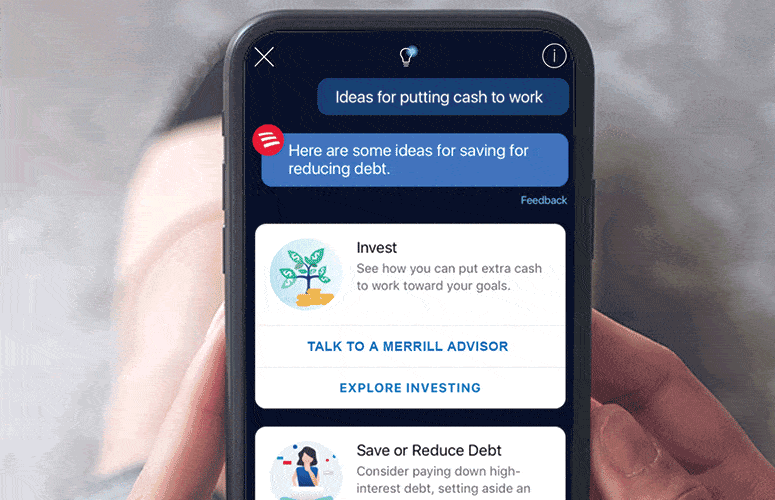As technology continues to evolve, so too do the tools that banks have at their disposal.
By Jim Pytell, Managing Editor On Feb 7, 2025
According to the 2024 Bank of America Business Owner Report, digital transformation continues to be a key priority for businesses, with 71% of small business owners and 99% of mid-sized business owners adopting digital strategies to optimize their operations.
These digital strategies include bolstering social media presence, and implementing digital marketing strategies, but also span traditional banking services such as conducting business banking online and accepting cashless payments.
In fact, according to Bank of America, 81% of small business owners and 97% of mid-sized business owners now accept digital payments, although some small business owners do remain hesitant about a completely digital payment future.
“Customers’ expectations for digital services have grown significantly, shaped by their experiences with digital banking and non-bank digital platforms,” explains Scott Hurlbert, senior vice president, Digital Channels at Provident Bank. “Businesses increasingly rely on digital banking as a critical channel for automation and seamless operations. Beyond basic capabilities, they demand uptime, reliability, and secure systems that integrate easily into their workflows.”
Hurlbert says that trust remains the cornerstone of business-bank relationships, especially as digital advancements have sometimes challenged personal connectivity.
“This is why successful digital strategies put customer relationships at the center, pairing advanced services with trusted advisers and support teams,” he says. “As businesses adopt these solutions, they value guidance to configure and fine-tune tools to their specific needs, reinforcing the partnership between banks and their clients.”
Key Tech Trends
Technological advancements in the banking industry are driving significant improvements in key business areas, including enhanced efficiency, stronger fraud protection, and greater innovation.
One example is embedded finance, which is defined as the seamless integration of digital banking, along with other financial products and services, into nonfinancial companies’ platforms or applications.
“Embedded finance has gained momentum recently, enabling businesses to integrate payment services directly into digital customer experiences, particularly in real-time online transactions. These advancements improve efficiency and align with the changing nature of businesses and the rise of new company structures,” Hurlbert says.
Additionally, as businesses adopt faster payment systems and deeper integrations with enterprise resource planning (ERP) systems, accounting software, and internal applications, they also face heightened risks. To address these, transaction monitoring, fraud prevention, and operational risk management have become critical components of digital banking solutions, with enhanced digital security features like multi-factor authentication and real-time monitoring making digital banking safer.
There is perhaps no more disruptive advancement than the proliferation of AI and its impact on the banking industry.
“When deployed effectively, AI helps businesses work smarter and more securely,” Hurlbert says. “Banks have also been leveraging AI and machine learning for years in areas like fraud prevention and regulatory compliance, analyzing large volumes of data to identify critical issues for review. These proven use cases ensure AI enhances, rather than replaces, human expertise.”
Generative AI also offers the potential to make information more accessible for both bank employees and customers. However, challenges remain in ensuring the accuracy and reliability required of these tools in banking environments.
“Since banks have no room for error, they’re more likely to adopt these tools internally for productivity gains before rolling them out in customer-facing applications,” Hurlbert says.
Russ Barrett, chief operations officer for Valley Bank, adds that because banks produce such an extensive amount of data, AI will enable their institutions to start leveraging that data to better anticipate customers’ needs while serving the needs of employees.
Specific Solutions
One example of an AI banking solution is Bank of America’s virtual financial assistant, Erica, which launched in 2018. Erica has since surpassed 2 billion interactions, helping more than 42 million clients with tasks like monitoring subscriptions, tracking expenses, and managing payments.
The bank says that among small business clients in particular, Erica usage grew by 29.5% over the past year, with 98% of inquiries resolved within seconds.
“Our data science team has made more than 50,000 updates to Erica’s performance since launch – adjusting, expanding and fine-tuning natural language understanding capabilities, ensuring answers and insights remain timely and relevant,” says Nikki Katz, head of digital at Bank of America.
Provident Bank also offers a comprehensive suite of digital banking solutions tailored to businesses of all sizes. Hurlbert points to ProvidentConnect Online Banking, which serves both small businesses and larger commercial clients with advanced treasury management needs.
“Some businesses prioritize account management and reporting, needing multi-user bill payment capabilities, while others focus on enhanced security, such as multi-layer authentication, token verification, and fraud prevention tools,” he says. “Additionally, we offer deposit escrow services for industries like real estate, law, and property management, enabling quick access to detailed summaries from master escrow and sub-accounts.”
Conclusion
Hurlbert says that one piece of advice he would give to a small or mid-sized business looking to switch to digital banking is to ensure that all company and employee contact information, such as phone numbers and email addresses, is up to date with the bank.
“This will help ensure you receive important information promptly and without delay. Take advantage of online demos and training the bank offers so you’re familiar with the platform in advance,” he says. “Additionally, speak with your relationship manager to confirm that the services you’ve signed up for align with your growth over the next 1-2 years. This way, your digital solution can grow alongside your business.”

